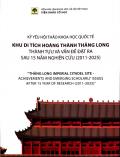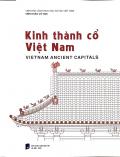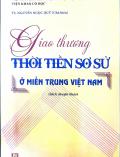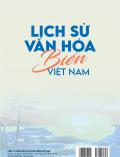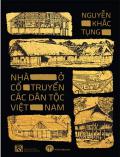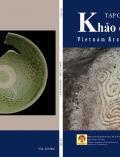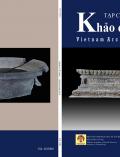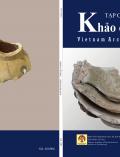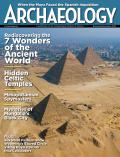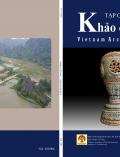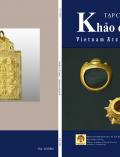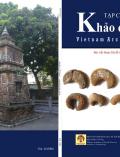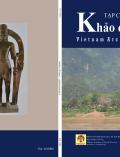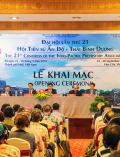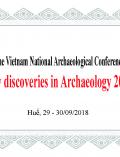Analytical Strategies and Cognitive Resonant
There is a diversity of approaches and studies in archaeology, including use of scientific equipments with or without clearly defined methodology or justification of their application. There are broadly four main perspectives in the domain of cognitive archaeology – Processual archaeology, Post-processual archaeology, Cognitive-processual archaeology and Evolutionary-cognitive archaeology and all focuses on the ways that ancient man/ societies thought and symbolic structures that can be perceived in past cultural and material cultures.
Reasoning correctly involves representing the constituent elements of a argument with premises, intermediate conclusions, and final conclusions. There are two fundamentally different analytical strategies – Top to Bottom and Bottom to Top. An analytical approach is the use of a process to logically arrange a problem down to multilevel elements. It is necessary to solve each element. The structured approach enables a researcher with an open mind to examine each element of the decision or problem separately and systematically and leaves scope that all alternatives can be considered. The outcome is almost always more comprehensive and more effective than with the instinctive approach. The analytical approach is indeed a proper use of reason to solve problems.
Models that simultaneously simplify and amplify the power of the original more resonant to our minds as the models make the original more present.
The rise of cognitive studies has brought about a new understanding of the hominine mind and also has brought together the social and natural sciences leading to breakthroughs in many fields. For example, the progress in the prehistoric lithic tools has been seen not only as technological innovations and improvisation, but also as a process of cognitive advancement in the prehistoric communities. Similarly, other aspects of human actions/ activities have been generally categorized and periodised on subsistence economy. However, attempt (s) to piece together tangible elements with intangible aspects of hominines like believes, customs, religion, burial practices, art and most importantly the idea and reasoning behind such aspects have not been adequately addressed.
Hence, cognitive resonant based on comprehensive analytical approaches and strategies under the domain of cognitive archaeology is the call of the hour. Applications of science and technology without rationale of its use or structured methodology may not lead to cognitive resonant and ultimately to understand cognitive ecosystem. This session welcomes papers on the use of analytical strategies and approaches for cogitating hominine cognition in archaeological landscape or at site (s). This can be true for both the pre-historical and historical archaeology.
Professor Prakash Sinha
Department of Ancient History,
Culture & Archaeology,
University of Allahabad-211002
India.
Email ID: passinha@yahoo.com
&
Dr Sukanya Sharma
Department of Humanities & Social Sciences
IIT-Guwahati,
Assam
India
Reasoning correctly involves representing the constituent elements of a argument with premises, intermediate conclusions, and final conclusions. There are two fundamentally different analytical strategies – Top to Bottom and Bottom to Top. An analytical approach is the use of a process to logically arrange a problem down to multilevel elements. It is necessary to solve each element. The structured approach enables a researcher with an open mind to examine each element of the decision or problem separately and systematically and leaves scope that all alternatives can be considered. The outcome is almost always more comprehensive and more effective than with the instinctive approach. The analytical approach is indeed a proper use of reason to solve problems.
Models that simultaneously simplify and amplify the power of the original more resonant to our minds as the models make the original more present.
The rise of cognitive studies has brought about a new understanding of the hominine mind and also has brought together the social and natural sciences leading to breakthroughs in many fields. For example, the progress in the prehistoric lithic tools has been seen not only as technological innovations and improvisation, but also as a process of cognitive advancement in the prehistoric communities. Similarly, other aspects of human actions/ activities have been generally categorized and periodised on subsistence economy. However, attempt (s) to piece together tangible elements with intangible aspects of hominines like believes, customs, religion, burial practices, art and most importantly the idea and reasoning behind such aspects have not been adequately addressed.
Hence, cognitive resonant based on comprehensive analytical approaches and strategies under the domain of cognitive archaeology is the call of the hour. Applications of science and technology without rationale of its use or structured methodology may not lead to cognitive resonant and ultimately to understand cognitive ecosystem. This session welcomes papers on the use of analytical strategies and approaches for cogitating hominine cognition in archaeological landscape or at site (s). This can be true for both the pre-historical and historical archaeology.
Professor Prakash Sinha
Department of Ancient History,
Culture & Archaeology,
University of Allahabad-211002
India.
Email ID: passinha@yahoo.com
&
Dr Sukanya Sharma
Department of Humanities & Social Sciences
IIT-Guwahati,
Assam
India
Thông báo
Thứ năm, 11 Tháng 12 2025- 17:31
Thứ hai, 29 Tháng 9 2025- 18:20
Thư viện
- Tác giả: Trung tâm Nghiên cứu Kinh Thành, Viện Khảo cổ học
- Nxb: Khoa học xã hội - 2025
- Số trang: 592tr
- Khổ sách: 24x29 cm
- Hình thức bìa...
- Tác giả: Trung tâm Nghiên cứu Kinh Thành, Viện Khảo cổ học
- Nxb: Khoa học xã hội - 2025
- Số trang: 255tr
- Khổ sách: 24x 29cm
- Hình thức bìa...
- Tác giả: TS. Nguyễn Ngọc Quý (chủ biên)
- Nxb: Khoa học xã hội - 2025
- Số trang: 288tr
- Khổ sách: 24cm
- Hình thức bìa: mềm
- Tác giả: Lê Xuân Thông - Đinh Thị Toan
- Nxb: Khoa khoa học xã hội - 2024
- Số trang: 394tr
- Khổ sách: 16 x 24cm
- Tác giả: Đổng Thành Danh
- Nxb: Khoa học xã hội - 2023
- Số trang: 248tr
- Khổ sách: 16 x 24cm
- Tác giả: Louis Malleret
- Nxb: Tổng hợp TP.Hồ Chí Minh - 2023
- Số trang: 567tr
- Khổ sách: 16 x 24cm
- Tác giả: Nguyễn Chí Bền
- Nxb: Khoa khoa học xã hội - 2024
- Số trang: 417tr
- Khổ sách: 16 x 24cm
- Tác giả: Nguyễn Khắc Tụng
- Nxb: Khoa học xã hội - 2023
- Số trang: 695tr
- Khổ sách: 16 x 24cm
- Tác giả: Đông A
- Nxb: Đại học sư phạm-
- Số trang: 660tr
- Khổ sách: 25x30cm
- Hình thức bìa: cứng
Tạp chí
Dày 100 trang, khổ 19x27cm
Dày 100 trang, khổ 19x27cm
Dày 100 trang, khổ 19x27cm
Dày 100 trang, khổ 19x27cm
November/December 2025 - Archaeology Magazine
Dày 100 trang, khổ 19x27cm
Dày 100 trang, khổ 19x27cm
Dày 100 trang, khổ 19x27cm
Dày 100 trang, khổ 19x27cm
Tin tức khác
24 Th9 2018 06:12
22 Th9 2018 11:09
28 Th8 2018 15:04
15 Th8 2018 13:10
25 Th7 2018 04:21
25 Th7 2018 04:19
Copyright © 2016 by khaocohoc.gov.vn.
Thiết kế bởi VINNO
Tổng số lượt truy cập: 10406755
Số người đang online: 19

